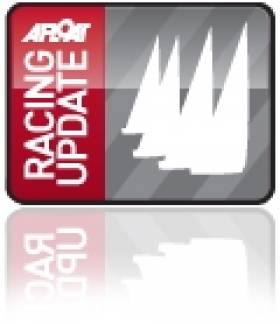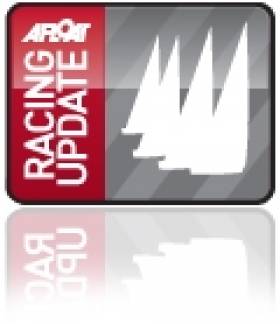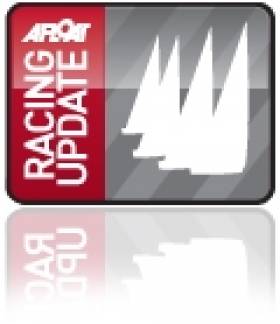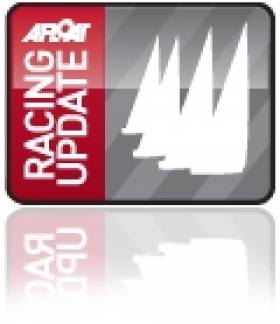Displaying items by tag: BurnhamonCrouch
Burnham Week 2014 Countdown to UK's East Coast Regatta
#burnhamweek – With less than a month to go before the start of Burnham Week (23-30 August) final preparations are underway to welcome visitors to the town, and provide competitors with challenging racing at this popular east coast sailing venue.
Although the Burnham Week 'festival' takes place over eight days, the three-series racing format (first Bank Holiday Weekend series, week series, and final Saturday) gives competitors an opportunity to race one or all three independent sections or participate in the entire week.
Entries are flowing in, which means top class competition is expected in all fleets including IRC and local handicap fleets. Some of the biggest entries will be the International Dragon, multihull, RS Elite, Hunter 707, Sonata, Squib, Royal Burnham One-Design, and Royal Corinthian One-Design fleets, with interest in the Sandhopper, Stella, and East Coast One-Design fleets starting to build. There is also a vibrant dinghy section with Phantoms, in particular, establishing an impressive fleet.
Malcolm Hutchings and Andy Ramsey, local Squib sailors and winners of Aberdeen Asset Management Cowes Week last year (from an 800-strong fleet), say the Squib is an ideal boat to race at Burnham Week. Ramsey commented: "Although we feel honoured to have won Cowes Week overall in 2013, there is something special about coming back to the East Coast to race Burnham Week. The Squib class at Burnham is always fun, yet competitive and it looks as though even more visitors are planning to take part this year. For us, of course, the event is right on our doorstep so what more could we ask for?"
The festival shore-side spirit that Burnham Week is known for looks set to continue. Quay Day, that was introduced last year and enjoyed by hundreds of visitors, is scheduled to take place once again on Bank Holiday Monday (25 August) and an even larger crowd is expected. In addition to the stalls and entertainment, there's an art exhibition at Burnham Museum, and there'll be an opportunity for spectators to really engage with the regatta including a chance to see race starts from the quayside, and a special display of gig racing. BBC Essex Radio presenters will also be out and about to capture the atmosphere of this quintessential British family regatta.
Racing, and social events run throughout the week culminating with the grand firework display to mark the end of the regatta and celebrate the winner of the Town Cup, which will be presented by Ron Pratt, the Mayor, at Crouch Yacht Club. John Whittingdale OBE MP for Maldon will present the remaining Burnham Week trophies. The annual 'duck' race to raise funds for the Essex Air Ambulance – the event's official charity – is also scheduled for the final Saturday.
A free Burnham Week guide that includes a brief explanation of the racing and class identification, as well as an update on all the shore side events, is available at shops and sailing clubs throughout the town.
Further details at the event can be obtained from the Regatta Office located at the Royal Corinthian Yacht Club, at the eastern end of the quayside.
Endeavour Signs up Topper for Further Three Years
Burnham-on-Crouch, Essex (Wednesday 6 October, 2010): Following a hugely successful 50th Endeavour Trophy champion of champions event last weekend at Burnham-on-Crouch, Topper Sailboats has agreed to renew its sponsorship deal for another three years.
Topper, who has supplied a brand-new fleet of Topper Xenon dinghies on an annual basis for the last six years, has decided to continue its association with this prestigious dinghy champion of champions regatta, to help the host club – the Royal Corinthian Yacht Club – maintain the reputation it has for running such a unique and high quality event.
Edwin Buckley – Event Director – chatting about Topper's involvement in the event, said: "We are absolutely delighted that Topper has agreed to continue its support. Thanks to Topper, we have seen the Endeavour grow into a highly acclaimed professional sporting event. We are passionate about ensuring this event continues to grow and hope we can attract more support to help it through the next 50 years. However, we do rely heavily on sponsorship and are looking for new supporting sponsors to match Topper's enthusiasm for the event."
Rick Reading – Topper's Sales and Marketing Director – added: "We are pleased to be involved with such a hi-profile dinghy event as the Endeavour Trophy and look forward to continuing to provide support. We have had a lot of valuable feedback about the Xenons from the champions who've sailed them over the years which has helped with the continued development of our Topper range of boats."
For full results of the 50th Endeavour Trophy, which took place last weekend, visit: www.royalcorinthian.co.uk/endeavour-championship
Big Winds Postpone First Endeavour Trophy Race
With winds exceeding 30 knots in the gusts, Race Officer Kim Allen and team made the wise decision to postpone the first race of the eight-race champion-of-champions series at the Royal Corinthian Yacht Club (1-3 October).
The extreme conditions also meant the pre-race on-the-water training session, directed by ABC for Winning coach Adam Bowers, was curtailed leaving the 30 national champion teams benefiting from a shore-based rules seminar with rules expert Trevor Lewis, and a race tactics talk by Bowers. Bowers talking about the session said: "There are many who have raced at this event before but there are also those who are totally new to the Endeavour Trophy, so my participation is to level that playing field a bit. Unfortunately the serious weather meant we couldn't get on the water today but hopefully the shore-based sessions gave a taste of what to expect on the water tomorrow."
Competitors were also blessed with the presence of Robin Judah, the man behind the creation of the Endeavour Trophy 50 years ago. Judah, a former International Judge and Umpire, flew in from his hometown of Bermuda this morning especially for the three-day 50th anniversary Endeavour championship and will be the special guest at the Endeavour Dinner at the RCYC tomorrow evening.
Thankfully the weather front is forecast to pass through by the morning leaving more favourable conditions with winds in the 11-13kt range to allow the first six, short/sharp, windward/leeward races to take place on the River Crouch.
The level of competition is expected to be extremely high with 30 fully charged national champions from the most popular dinghy racing classes itching to get out on the water to race the Ian Howlett-designed Topper Xenon. This class, which has been used successfully at this event for the last five years, offers an ideal all-up crew weight range of between 18-24 stone (114-152 kilos) and because it's a relatively new design and has no class championship, there is no class champion to gain an unfair advantage.
Topper, who have specifically built and kindly loaned the fleet of 30 brand-new Xenons for the event, have been working closely with Hyde who are supplying sails, Allen Brothers the fittings, Selden the masts, and English Braids the rope. Together they have been able to produce an 'Endeavour boat' that is arguably the most fair choice of class in the history of the event. Other key sponsors include Noble Marine who has insured the fleet, Petticrows who has provided shore support, and Musto who has donated a £1,000 voucher for the overall winners of the 2010 Endeavour Trophy.
The race schedule starts tomorrow (2 October) at 1030. The plan is to run six races back-to-back on windward/leeward courses lasting a minimum of 35 minutes per race. The 50th Endeavour Trophy dinner is at the club that evening, and the final races of the Endeavour Trophy are taking place on Sunday morning. The special 50th anniversary Masters' championship on the Sunday will start at 1400, and the prizegiving for both events will take place as soon as possible after the last race.
Endeavour Trophy 2010 entries (30)
Class Helmsman and crew
B14 Tim Harrison and Jonny Ratcliffe
Blaze Rob Jones and Ian Clark
Cadet Andrew and Christopher Smith
Enterprise Nick Craig and Toby Lewis
Fireball Chips Howarth and Simon Potts
Firefly Ben Vines and Eddie Webb
420 Phil Sparks and Piers Strong
GP14 Ian Dobson and Andy Tunnicliffe
Hornet Richard Garry and James Beer
Lark Harry Pynn and Michael John Gifford
Laser 2000 Jasper Barnham and Graham Sexton
Laser 4000 Alistair Hodgson and Sue Ogg
Merlin Rocket Stuart Bithell and Christian Birrel
Mirror Chris Rust and Ollie Newman
Musto Skiff Bruce Keen and Penny Clark
National 12 Graham Camm and Zoe Ballantyne
Osprey Gareth Cauldwell and Robin Toozs-Hobson
Pico Jack and Peter Lawson
RS Feva Robert Baddeley and James Taylor
RS200 Dave and Jane Hivey
RS300 Steve Bolland and Pete Cruickshank
RS500 Tim Wilkins and Michael Geerling
RS600 Jamie Mawson and Chris Fry
RS700 Jon Heissig and Nicky Griffin
Scorpion David Wade and Steve Hall
Solo Matt Howard and Simon Haighton
Topper Edward Jones and Hector Simpson
29er David Conlon and Finbar Anderson
Vortex Phil Whitehead and Jonathan Lister
Wayfarer Michael McNamara and Chris Videlo
Dinghy Champions head to Burnham-on-Crouch for 50th Endeavour Trophy
A strong line-up of competitors is preparing to do battle at this weekend's 50th Endeavour Trophy event at Burnham-on-Crouch in the UK.
To mark the half century of this annual dinghy Champion of Champions event, the host club – the Royal Corinthian Yacht Club – has extended the regatta to run over three days (1-3 October) and, as well as inviting current dinghy class champions, has also invited former Endeavour champions to race a Masters' Championship on the Sunday afternoon immediately following the concluding races of the 2010 Endeavour Trophy series. The grand Endeavour dinner on the Saturday night also promises to be one of the best yet with over 130 tickets sold so far.
This historic annual event, which was first held in 1961, is invitation only to determine the overall dinghy champion of champions from the UK's most popular dinghy racing classes. But to ensure the event is made as fair as possible – to provide for the diverse entry including solo, double-handed, heavy and lightweight crews – racing takes place in carefully selected, strict one-designs.
Owing to the success of the last five years, the Ian Howlett-designed Topper Xenon is the chosen class once again. Not only does this particular design offer an ideal all-up crew weight range of between 18-24 stone (114-152 kilos), but also because it's a relatively new design and has no class championship, there is no class champion to gain an unfair advantage.
Topper, who have specifically built and kindly loaned the fleet of 30 brand-new Xenons for the event, have been working closely with Hyde who are supplying sails, and Allen Brothers the fittings. Together they have been able to produce an 'Endeavour boat' that is arguably the most fair choice of class in the history of the event.
Because the Endeavour Trophy is, and has always been, recognised as the pinnacle of the year's dinghy sailing achievements, the quality of entry is exceptionally high and the competition extremely hot. The special 50th anniversary Masters' championship on the Sunday will also add to the flavour of the event particularly with the likes of former champions Keith Musto, Nick Martin, Chips Howard, Ian Southworth, David Hayes, Mike Holmes, Alan Gillard, Steve Tylecote, Mike McNamara, Nick Craig, and last year's winner Geoff Carveth already signed up. Racing for this event will take place off the club, giving spectators the opportunity to really see the masters at work.
The race programme for the 50th Anniversary Endeavour Trophy for 2010 champions starts on Friday 1 October with the first race of the eight-race series kicking off at 1525. The series continues all day Saturday, with the 50th Endeavour Trophy dinner taking place at the club that evening. The final race of the Endeavour Trophy concludes on Sunday morning, and the Masters' championship will start at 1400. The prizegiving for both events will take place as soon as possible after the last race.
Endeavour Trophy 2010 entries
Class Helmsman and crew
B14 Tim Harrison and Jonny Ratcliffe
Blaze Rob Jones and Ian Clark
Cadet Andrew and Christopher Smith
Enterprise Nick Craig and Toby Lewis
Fireball Chips Howarth and Simon Potts
Firefly Ben Vines and Eddie Webb
420 Phil Sparks
GP14 Ian Dobson and Andy Tunnicliffe
Hornet Richard Garry and James Beer
Lark Harry Pynn and Michael John Gifford
Laser 2000 Jasper Barnham
Laser 4000 Alistair Hodgson and Sue Ogg
Merlin Rocket Stuart Bithell and Christian Birrel
Mirror Chris Rust and Ollie Newman
Musto Skiff Bruce Keen and Penny Clark
National 12 Graham Camm and Zoe Ballantyne
Osprey Gareth Cauldwell and Robin Toozs-Hobson
Pico Jack Lawson
RS Feva Robert Baddeley and James Taylor
RS200 Dave and Jane Hivey
RS300 Steve Bolland and Pete Cruickshank
RS500 Tim Wilkins and Michiel Geerling
RS600 Jamie Mawson and Chris Fry
RS700 John Heissig and Nicky Griffin
Scorpion David Wade and Steve Hall
Solo Matt Howard and Luke Patience
Topper Edward Jones and Hector Simpson
29er David Conlon and Fin Anderson
Vortex Phil Whitehead and Jonathan Lister
Wayfarer Michael McNamara
Brief history of the Endeavour Trophy
The Endeavour Trophy is a solid silver scale model of the 'J' Class yacht Endeavour presented annually to the Champion of Champions at the Royal Corinthian Yacht Club, Burnham-on-Crouch.
The origin of the trophy stems from Tommy Sopwith's 'J' Class yacht Endeavour, America's Cup Challenge in 1934. Following a pay dispute and dismissal of his East coast-based professional crew, Sopwith enlisted the help of 'Tiny' Mitchell, the Commodore of the Royal Corinthian Yacht Club at the time, to recruit amateur members of the club to form a crew.
Although Endeavour won the first two races against Rainbow and lost the series, this was the closest England has ever got to winning the coveted America's Cup.
Years later, Robin Judah respected member of the RCYC was anxious to establish a series of races for dinghy sailors in order to discover the 'Champion of Champions'. Beecher Moore, former Endeavour crew, and marketing man behind the successful dinghy designer Jack Holt, joined Judah in his quest to run this event and presented for the overall winner, his solid silver scale model of the yacht.
The first invitation-only race took place in 1961 and the winner was Peter Bateman, representing the International Cadet Class, crewed by Keith Musto. The original idea was to use the club's own fleet of 15 Royal Corinthian One-Designs but they were considered too specialist and would have placed a perpetual limit on the number of entries. Since then the event has been sailed numerous classes including the GP 14s, Laser 2s, Larks, Enterprises, RS400s and now the Topper Xenon.
For results visit: www.royalcorinthian.co.uk/endeavour-championship
































































